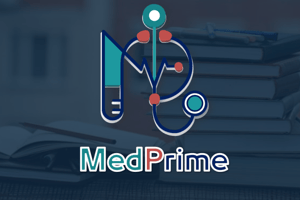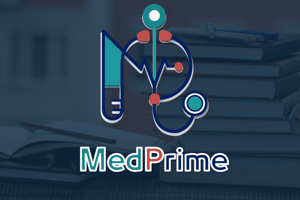Podcast
Questions and Answers
Which vitamin is crucial for the final maturation of red blood cells and DNA synthesis?
Which vitamin is crucial for the final maturation of red blood cells and DNA synthesis?
Which of the following factors can increase the rate of erythropoiesis?
Which of the following factors can increase the rate of erythropoiesis?
Which of the following is NOT a stage in erythropoiesis?
Which of the following is NOT a stage in erythropoiesis?
What is the approximate percentage of hemoglobin in the total body iron content?
What is the approximate percentage of hemoglobin in the total body iron content?
Where is the majority of iron stored in the body?
Where is the majority of iron stored in the body?
Which form of iron is absorbed in the small intestine?
Which form of iron is absorbed in the small intestine?
What is the role of vitamin C in iron metabolism?
What is the role of vitamin C in iron metabolism?
Which protein binds to iron in the blood plasma for transport?
Which protein binds to iron in the blood plasma for transport?
What happens to excess iron in the blood?
What happens to excess iron in the blood?
What is the role of copper in erythropoiesis?
What is the role of copper in erythropoiesis?
What is the name of the iron-storage protein complex?
What is the name of the iron-storage protein complex?
What is the term for the committed stem cells that give rise to red blood cells?
What is the term for the committed stem cells that give rise to red blood cells?
Which of the following is the correct sequence of red blood cell development?
Which of the following is the correct sequence of red blood cell development?
What is the average lifespan of a red blood cell (RBC)?
What is the average lifespan of a red blood cell (RBC)?
Where does erythropoiesis primarily occur in adults?
Where does erythropoiesis primarily occur in adults?
Which hormone plays a key role in stimulating red blood cell production?
Which hormone plays a key role in stimulating red blood cell production?
What is the primary stimulus for erythropoietin secretion?
What is the primary stimulus for erythropoietin secretion?
Which vitamin is essential for DNA synthesis and red blood cell maturation?
Which vitamin is essential for DNA synthesis and red blood cell maturation?
Which mineral is crucial for the formation of hemoglobin?
Which mineral is crucial for the formation of hemoglobin?
What is the function of carbonic anhydrase enzyme in red blood cells?
What is the function of carbonic anhydrase enzyme in red blood cells?
What is the main source of energy for red blood cells?
What is the main source of energy for red blood cells?
In which organ are old and damaged red blood cells primarily destroyed?
In which organ are old and damaged red blood cells primarily destroyed?
What is the term for the process of red blood cell formation?
What is the term for the process of red blood cell formation?
A patient with chronic kidney disease develops anemia. What is the most likely underlying cause?
A patient with chronic kidney disease develops anemia. What is the most likely underlying cause?
How does hypoxia stimulate erythropoiesis?
How does hypoxia stimulate erythropoiesis?
Why do individuals living at high altitudes often have higher red blood cell counts?
Why do individuals living at high altitudes often have higher red blood cell counts?
A patient with iron deficiency anemia is prescribed iron supplements. How does iron contribute to red blood cell production?
A patient with iron deficiency anemia is prescribed iron supplements. How does iron contribute to red blood cell production?
Explain the role of vitamin B12 and folic acid in red blood cell maturation.
Explain the role of vitamin B12 and folic acid in red blood cell maturation.
A patient with megaloblastic anemia has abnormally large red blood cells. What is the most likely cause of this condition?
A patient with megaloblastic anemia has abnormally large red blood cells. What is the most likely cause of this condition?
How does the biconcave shape of red blood cells contribute to their function?
How does the biconcave shape of red blood cells contribute to their function?
What is the significance of the absence of mitochondria in red blood cells?
What is the significance of the absence of mitochondria in red blood cells?
Explain the process of iron absorption in the small intestine.
Explain the process of iron absorption in the small intestine.
What is the role of ferritin in iron metabolism?
What is the role of ferritin in iron metabolism?
How does the body regulate iron absorption to prevent iron overload?
How does the body regulate iron absorption to prevent iron overload?
A patient with liver disease has impaired production of transferrin. How would this affect iron metabolism?
A patient with liver disease has impaired production of transferrin. How would this affect iron metabolism?
What is the function of copper in erythropoiesis?
What is the function of copper in erythropoiesis?
Why is it important for red blood cells to be flexible?
Why is it important for red blood cells to be flexible?
What happens to the components of hemoglobin when red blood cells are destroyed?
What happens to the components of hemoglobin when red blood cells are destroyed?
Which of the following is NOT a characteristic of mature red blood cells (RBCs)?
Which of the following is NOT a characteristic of mature red blood cells (RBCs)?
The primary function of carbonic anhydrase in RBCs is to:
The primary function of carbonic anhydrase in RBCs is to:
In adults, the primary site of erythropoiesis (red blood cell production) is the:
In adults, the primary site of erythropoiesis (red blood cell production) is the:
Which of the following conditions would most likely stimulate erythropoietin production?
Which of the following conditions would most likely stimulate erythropoietin production?
A deficiency in vitamin B12 or folic acid would most likely result in which type of anemia?
A deficiency in vitamin B12 or folic acid would most likely result in which type of anemia?
Which of the following is the primary storage form of iron in the body?
Which of the following is the primary storage form of iron in the body?
Iron is primarily absorbed in the:
Iron is primarily absorbed in the:
Which of the following hormones directly stimulates erythropoiesis?
Which of the following hormones directly stimulates erythropoiesis?
Which of the following is NOT a function of red blood cells?
Which of the following is NOT a function of red blood cells?
Flashcards are hidden until you start studying
Study Notes
Red Blood Cells (RBCs)
- RBCs are biconcave discs, facilitating gas exchange.
- They contain hemoglobin, which is vital for oxygen and carbon dioxide transport.
- Mature RBCs lack a nucleus, distinguishing them from many other cell types.
Lifespan and Production
- The average lifespan of a red blood cell is approximately 120 days.
- Erythropoiesis, the production of RBCs, primarily occurs in red bone marrow in adults.
Hormonal Regulation
- Erythropoietin is the hormone that stimulates RBC production, mainly produced in the kidneys.
- Hypoxia (low oxygen levels) is the primary stimulus for erythropoietin secretion.
Functions of RBCs
- RBCs play a crucial role in oxygen transport, carbon dioxide transport, and acid-base buffering.
- They do not partake in phagocytosis of bacteria.
Hemoglobin and Iron
- Hemoglobin is the main constituent of RBCs containing iron, essential for oxygen transport.
- Iron is stored primarily in the liver and is crucial for hemoglobin production; its absorption occurs in the duodenum and jejunum.
Vitamins and Nutrients
- Vitamin B12 is vital for the maturation of RBCs and DNA synthesis.
- Vitamin C aids in iron absorption by reducing ferric iron (Fe3+) to ferrous iron (Fe2+).
- Copper acts as a cofactor in hemoglobin synthesis.
Red Blood Cell Disorders
- Anemia is characterized by a deficiency of RBCs or hemoglobin.
- Megaloblastic anemia involves larger than normal red blood cells (macrocytes) and is linked to disrupted DNA synthesis.
Iron Metabolism
- Transferrin binds to iron in the blood for transport.
- Ferritin and hemosiderin are involved in iron storage.
- Excess iron in the blood is primarily stored in liver cells rather than excreted.
Erythropoiesis Factors
- Factors that enhance erythropoiesis include high altitude, increased oxygen demand, and blood loss.
- Tissue oxygenation, healthy bone marrow, and hormones like androgens can influence erythropoiesis.
Development and Structure
- RBC production sites shift from yolk sac and liver in fetal development to primarily bone marrow in adulthood.
- The biconcave shape of RBCs provides a larger surface area for gas exchange.
Normal RBC Counts
- Normal red blood cell count for adult males averages between 4.7 to 5.7 million cells per cubic millimeter.
Phagocytosis and Aging of RBCs
- Macrophages are responsible for phagocytizing old and damaged red blood cells.
- The process of erythropoiesis results in a commitment from pluripotent hematopoietic stem cells to colony-forming unit - erythrocyte (CFU-E) and eventually to mature RBCs.
Characteristics of Mature Red Blood Cells (RBCs)
- Mature RBCs are biconcave, allowing for increased surface area and flexibility.
- They lack a nucleus, maximizing space for hemoglobin to enhance oxygen transport.
- Hemoglobin is the protein responsible for oxygen binding and transport.
Function of Carbonic Anhydrase
- Carbonic anhydrase in RBCs catalyzes the conversion of carbon dioxide into bicarbonate.
- This enzyme significantly accelerates carbon dioxide transport in the blood.
Site of Erythropoiesis
- In adults, red bone marrow serves as the primary site for RBC production.
- Found in flat bones such as the sternum and pelvis, red bone marrow is critical for maintaining adequate RBC levels.
Erythropoietin Production
- Low blood oxygen levels, known as hypoxia, stimulate erythropoietin production from the kidneys.
- Erythropoietin promotes RBC production to improve oxygen transport capacity in the blood.
Anemia Types Related to Vitamin Deficiencies
- A deficiency in vitamin B12 or folic acid leads to megaloblastic anemia.
- This type of anemia is characterized by the formation of larger than normal RBCs (macrocytes) due to impaired maturation.
Iron Storage in the Body
- Ferritin is the primary storage form of iron, preventing toxicity.
- It stores iron mainly in the liver and reticuloendothelial system, ensuring a readily available supply for erythropoiesis.
Iron Absorption
- The duodenum, the upper part of the small intestine, is where iron absorption primarily occurs.
- Iron is taken up by intestinal cells and subsequently transported into the bloodstream.
Hormones Stimulating Erythropoiesis
- Erythropoietin is the key hormone directly responsible for stimulating RBC production in the bone marrow.
- Other hormones like insulin and glucagon do not play a role in erythropoiesis.
Lifespan of Red Blood Cells
- The average lifespan of an RBC is approximately 120 days.
- After this period, senescent RBCs are removed from circulation, primarily by the spleen.
Functions of Red Blood Cells
- RBCs are responsible for transporting oxygen and carbon dioxide in the blood.
- They help maintain acid-base balance in the blood and contribute to blood viscosity, but do not initiate blood clotting, which is the role of platelets.
Red Blood Cells and Erythropoiesis
- Average lifespan of a red blood cell (RBC) is approximately 120 days.
- Erythropoiesis occurs primarily in red bone marrow in adults.
- The hormone erythropoietin is crucial for stimulating RBC production.
- Hypoxia, or low oxygen levels, serves as the primary stimulus for erythropoietin secretion.
- Vitamin B12 is essential for DNA synthesis and maturation of red blood cells.
- Iron is vital for hemoglobin formation, necessary for oxygen transport.
- Carbonic anhydrase in RBCs catalyzes the conversion of carbon dioxide to bicarbonate, aiding in gas transport.
- Red blood cells primarily derive energy through anaerobic glycolysis.
- Old and damaged RBCs are mainly destroyed in the spleen.
- The formation of red blood cells is referred to as erythropoiesis.
Anemia and Iron Metabolism
- In chronic kidney disease, anemia primarily arises from impaired erythropoietin production.
- Hypoxia stimulates erythropoiesis by increasing erythropoietin release from the kidneys.
- High altitudes lead to increased RBC counts due to lower oxygen availability triggering erythropoiesis.
- Iron supplements aid red blood cell production by providing a key component of hemoglobin.
- Vitamin B12 and folic acid are necessary for DNA synthesis and cell division in RBC precursors.
Characteristics and Functions of RBCs
- Mature RBCs lack a nucleus, which maximizes hemoglobin space for oxygen transport.
- The biconcave shape of RBCs increases surface area for gas exchange, flexibility, and ease of passage through capillaries.
- Absence of mitochondria allows RBCs to carry more oxygen and prevents them from consuming the oxygen they transport.
- Hemoglobin components are broken down when RBCs are destroyed, with globin converting to amino acids and heme transforming into bilirubin.
Iron Absorption and Storage
- Iron is primarily absorbed in the duodenum, the upper section of the small intestine.
- Ferritin is the main storage form of iron in the body, stored in the liver and reticuloendothelial system.
- Body regulates iron absorption by decreasing transferrin production when iron stores are high.
- Copper acts as a cofactor in hemoglobin synthesis and is necessary for iron absorption.
- In liver disease, impaired transferrin production results in decreased iron transport in the blood.
Functions of Red Blood Cells
- Red blood cells transport both oxygen and carbon dioxide, contributing to acid-base buffering and blood viscosity.
- They do not initiate blood clotting, a function carried out by platelets.
- The overall adaptability and efficiency of RBCs contribute significantly to their role in maintaining gas exchange within the circulatory system.
Studying That Suits You
Use AI to generate personalized quizzes and flashcards to suit your learning preferences.




